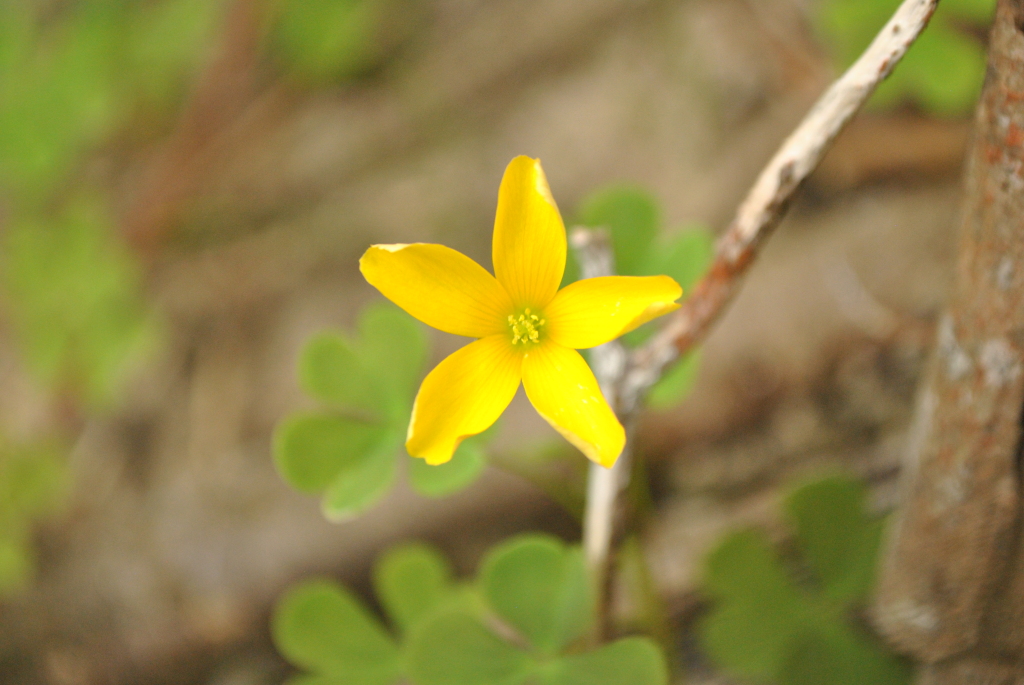Oxalis rubens
Haw. Dune Wood-sorrelHerb with prostrate or ascending or almost scrambling stems, sometimes rooting at nodes, to 35 cm long, glabrous or sparsely antrorse-hairy; taproot absent or slender; bulbils absent. Leaves cauline, sometimes subopposite or whorled, 3-foliolate; leaflets sessile, cuneate-obcordate, 2–9 mm long, 2–11 mm wide, angular, bilobed, purplish-green, subglaucous, more or less glabrous above, sparsely pubescent below, margins ciliate, sinus to c. half leaflet length, lobes oblong to obovate, straight, divergent, apices broad-obtuse, 1.5–7 mm apart; petioles usually 7–30 mm long, with mostly antrorse hairs; stipules usually conspicuous, to c. 3 mm long, membranous and truncate or apex tapering abruptly to pedicel, ciliate. Inflorescences axillary, flowers 1- or 2 per peduncle, held usually above leaf level; peduncles longer than leaves, antrorse-hairy; pedicels erect or reflexed in fruit (but capsules erect). Sepals oblong, 3–5 mm long, often ciliate. Petals 6–14 mm long, yellow. Capsule 13–24 mm long, 3–4 mm diam., moderate to broad cylindrical or narrow ellipsoid, occasionally thickened in middle, usually densely retrorse-hairy, occasionally also with longer patent septate hairs; seeds 1.7–2.2 mm long, transversely ribbed, grooves U-shaped, ribs without greyish or whitish lines or blotches. Flowers throughout the year.
GipP, OtP, WaP, CVU, EGL, EGU, VAlp. Also SA, Qld, NSW, Tas. New Zealand. Confined to coastal dunes and scrub, growing on stabilised sand-dunes, in Banksia integrifolia woodland, and beaches among Spinifex sericeus.
Rarely collected in Victoria. Oxalis rubens can be confused with large-flowered forms of O. exilis (see note for O. exilis). Most collections are from coastal eastern Victoria, with two collections from Loch Ard Gorge area, near Port Campbell.
Conn, B.J.; Jeanes, J.A.; Richards, P.G. (1999). Oxalidaceae. In: Walsh, N.G.; Entwisle, T.J., Flora of Victoria Vol. 4, Cornaceae to Asteraceae, pp. 207–218. Inkata Press, Melbourne.
 Spinning
Spinning


